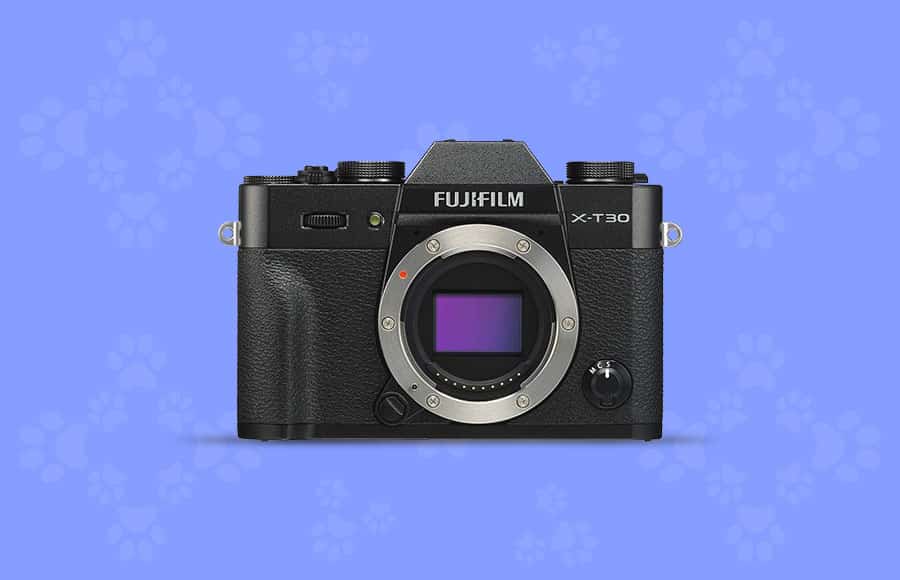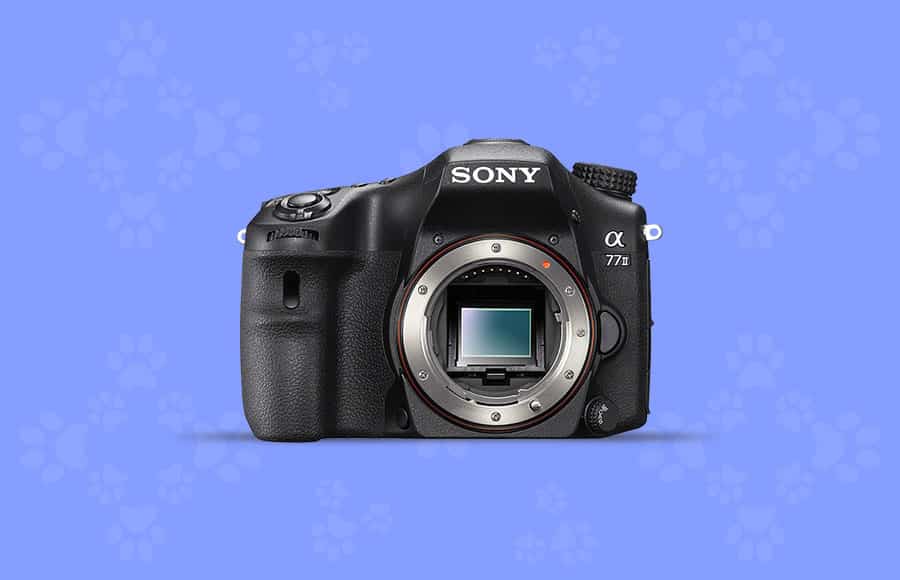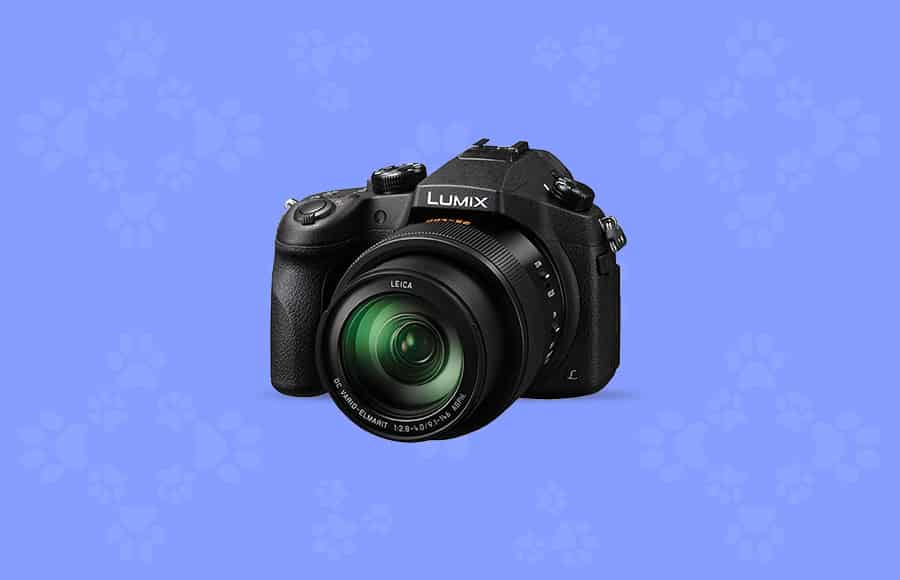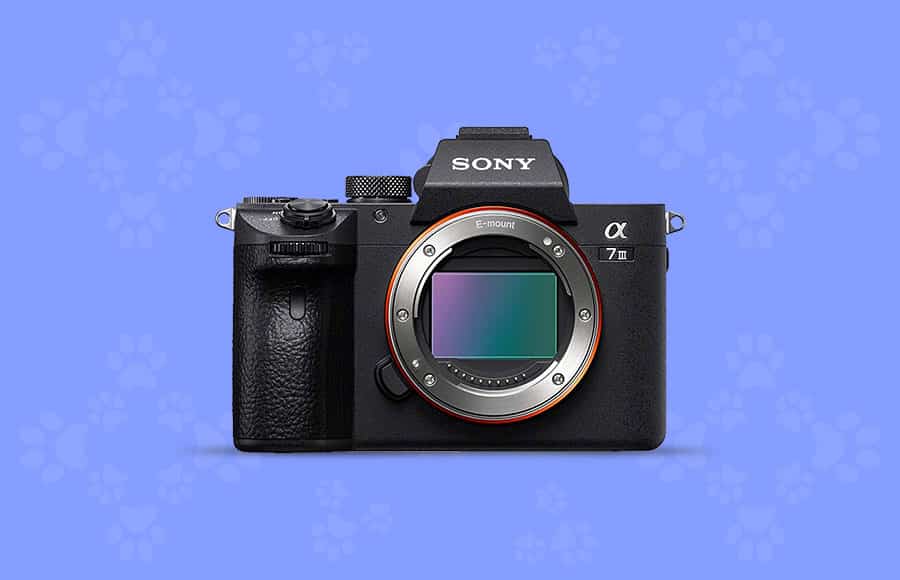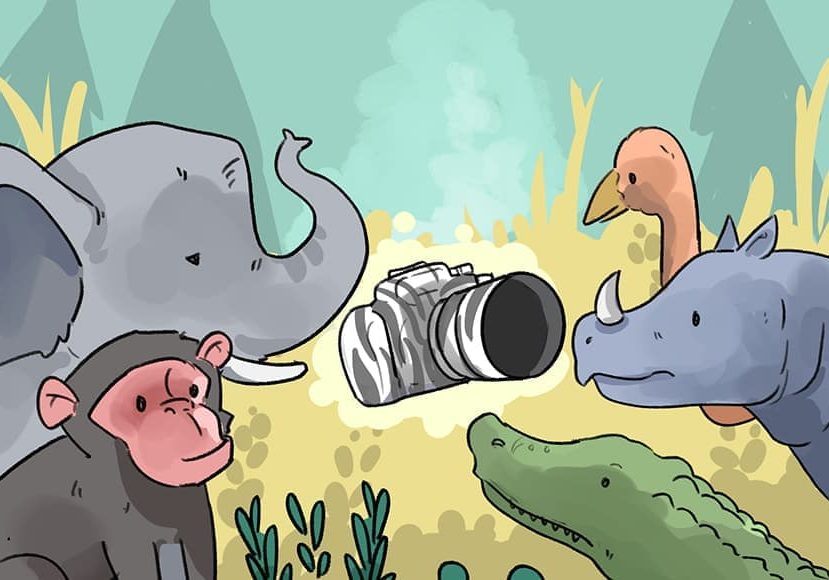
Best Camera for Wildlife Photography to Capture Nature, Birds & Animals
Whether you're going on safari or simply visiting you local zoo, these are the best cameras for wildlife photography of the year.
If you’re searching for the best camera for wildlife photography, I assume you’re going on a safari adventure – how I envy you!
Taking photos of animals, be it on a safari tour or just at your local zoo, can be a challenge.
With this in mind, we’ve put together a selection of recommended digital cameras for photographing wildlife.
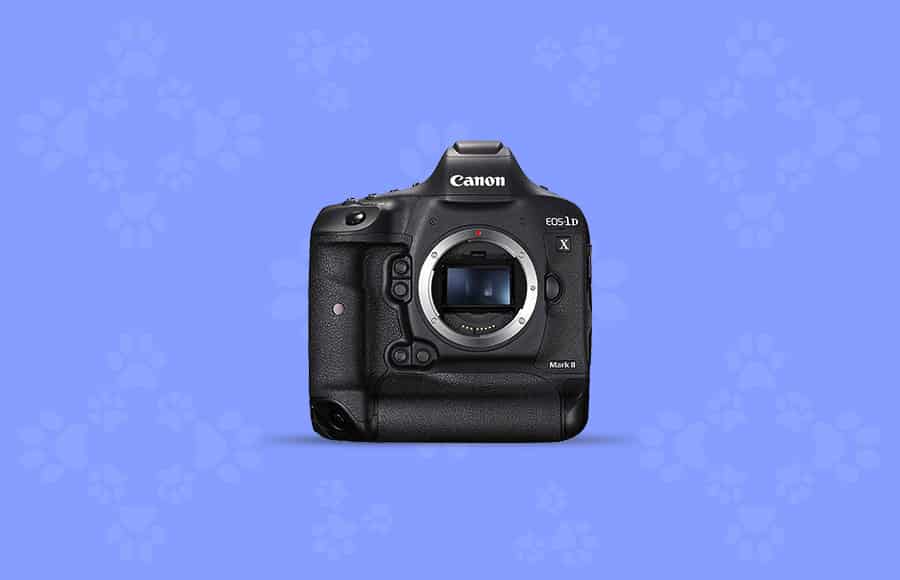
Lock onto even the fastest creatures with intelligent subject tracking and incredible AF performance.
Taking photos of wildlife requires a camera with a fast frame rate and accurate/reliable auto-focus. It helps if it’s rugged and weather-resistant too, just in case you’re caught in a downpour.
You’ll also need to attach a suitable long-range zoom lens to your camera, especially if you don’t intend to get too close to the animals. A spotting scope is also a good idea if you want to remain unnoticed.
Let’s look at the best mirrorless and DSLR cameras for wildlife photography of the year so far.
Best Camera for Wildlife Photography in 2024
| Image | Product | Features | |
|---|---|---|---|
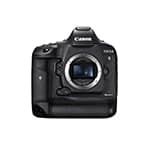 | Canon 1D X Mark IIBEST ALLROUND |
| View Price → |
 | Fujifilm X-T30BEST VALUE |
| View Price → |
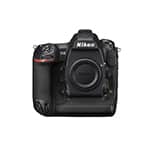 | Nikon D5HIGHLY RECOMMENDED |
| View Price → |
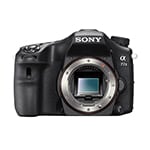 | Sony a77II |
| View Price → |
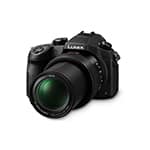 | Panasonic Lumix DMC-FZ1000 |
| View Price → |
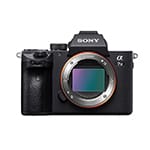 | Sony a7III |
| View Price → |
1. Canon EOS-1D X Mark II
Sensor: Full-Frame | Resolution: 20.2MP | Monitor: 3.2-inch tilt-angle touchscreen, 1620K dots | Autofocus: 61-AF points | Max frame rate: 16fps | Video: 4K at 60p | Weight: 1340g (2.95 lb)
Regardless of location, if you’re going to shoot wildlife, then you’re going to need a digital camera with stellar performance capabilities.
Autofocus System and Frames Per Second are two photography terms that are really going to count to a wildlife photographer, so pay special attention to these.
If you prefer DSLR full-frame cameras then you’re in luck, because the Canon EOS-1D X Mark II ticks all the right boxes. Canon is a very popular choice amongst wildlife photographers and for good reason.
This full-frame digital camera has a 20.2 Megapixel full-frame sensor and, while not that big as far as sensors go, it’s in the burst modes that this Canon camera shines. The 1 D X Mark II boasts a frame rate of 14fps for an ultra-fast shooting speed with unlimited JPEG images and up to 170 RAW images.
That’s a huge amount of data being captured by the full-frame sensor, buffered and transferred to the memory card thanks to the dual processors on board. Professional wildlife photographers typically love more data so that they can work their magic in post-processing.
When you first pick up this camera you’re immediately impressed by its design, ergonomic considerations and dual grips. These allow for a seamless transition between portrait and landscape orientation.
Aside from being able to shoot in fast continuous modes, you also need to have fast and sticky autofocus. Thanks to Canon’s EOS Intelligent Tracking and Recognition AF system with 61 autofocus points, your subjects will have trouble getting away.
While the 1D X Mark II is a big and heavy camera, when paired with any of the fast telephoto primes or zooms it has a good level of balance. What’s more, there’s a fantastic range of both Canon and third party manufactured lenses awith a telephoto focal length vailable for wildlife photography.
It’s good to know that the 1D X Mark II has a rated shutter lifespan of 400,000 actuations, and is likely to last well beyond that too.
It’s feature-packed as it’s a pro-level camera designed for sports, events and of course wildlife photography. There’s little doubt as to why, in this class, it is the best wildlife camera.
All function buttons and terminal ports are neatly and sensibly placed around the body. Also, the Canon menu system is incredibly intuitive and easy to navigate.
When out in the wild, regardless of the quality of the lighting conditions, you’re sure to be able to spot, track and capture amazing images of your wildest subject. Low light performance is off the charts with a standard ISO range up to 51200 and an expanded ISO range of 409600.
As mentioned, this is a pro-level product and many would argue it’s actually the best camera for wildlife photography.
In fact, it’s possibly one of the best full-frame cameras no matter what genre you shoot. Such a high performing and capable camera is bound to come at a cost.
The Canon EOS-1D X Mark II retails for around $5,000 and when paired with any one of Canon’s stellar telephoto lenses you have quite a costly kit. But it’s a worthwhile investment – especially if you want to capture the best wildlife images possible.
(Yes, there’s the 1D X Mark III already out too, but we’d actually recommend sticking with the previous model unless you absolutely need more AF points and faster continuous shooting – the Mark III is a big jump in price, after all. It’s currently one of the most expensive cameras.)
2. Fujifilm X-T30
Sensor: Mirrorless | Resolution: 26.1MP | Viewfinder: 2.360K dots | Monitor: 3-inch tilt-angle touchscreen, 1040K dots | Autofocus: 425-AF points | Max frame rate: 8fps | Video: 4K at 30p | Weight: 383g (0.84 lb)
If you’re new to wildlife photography or are operating on a budget, then the Fujifilm X-T30 is the best mirrorless camera for wildlife photography. What’s more, it’s the neatest and most compact camera in this entire roundup.
Coming in at just 383gm (0.84 lb), it’s a perfect camera for travellers who don’t want to have to pack or carry a big heavy DSLR.
Another bonus is that Fujifilm makes amazing lenses perfect for wildlife including both premium and budget level telephoto zooms. These X Series lenses pair perfectly with the X-T30 and together achieve excellent image quality.
Remember also that there’s an abundance of non-native lenses that can be attached to Fuji X-series mirrorless camera bodies – see my favourites here.
The camera’s AF system is very comprehensive and includes various tracking options. You have the option for Single Point focusing with a manual selection from 117 to 425 autofocus points. This is perfect for wildlife photographers focusing on fast-moving animals or even birds.
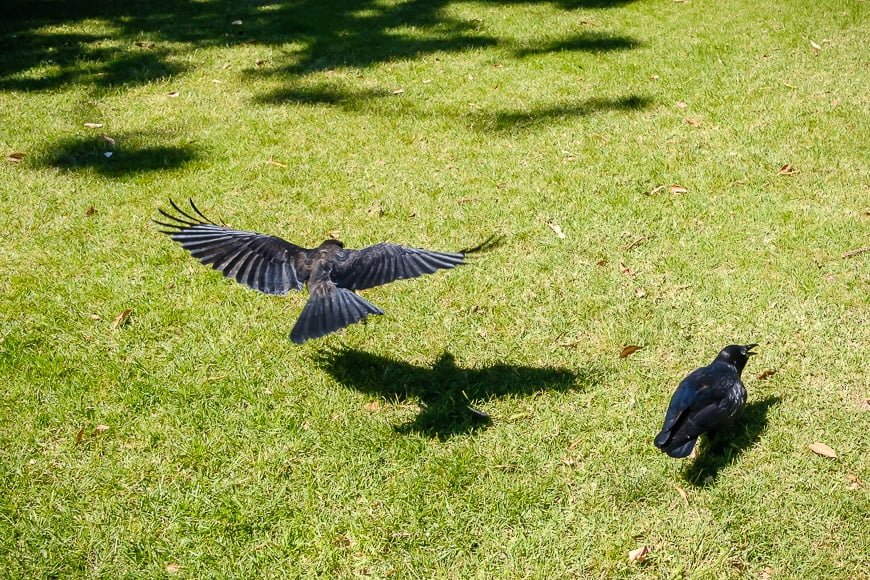
Birds in flight – Fujifilm X-T30 | © Greg Cromie
The autofocus sticks to its subject and allows you to capitalize on the respectful 8 frames per second. This way you can capture many images of your subject in motion and then select later which is the best of the bunch.
Another thing that’s worth noting about the Fuji X-T30 is that it has a real focus on using manual control dials for camera settings such as aperture, shutter speed and ISO. While the ability to flick to Auto is there, Fuji provides a solution to really get to know and understand how to control your photography.
The X-T30 camera features a 26.1MP APS-C sensor and a fast processor allowing you to produce exceptional images of your favourite wildlife subject. When it comes to mirrorless cameras, this Fuji is definitely one of the best in class.
Being a mirrorless camera, the Fuji X-T30 utilises a high resolution and well magnified Electronic Viewfinder, or EVF. The EVF has a fantastic refresh rate and provides a view that is close to true to life.
In addition, the X-T30 has a high-resolution touch screen that flips to face up and angle down for shooting from different positions. The touch screen also acts as a means of activating various functions such as white balance and Fuji’s amazing film simulations.
The rest of the functions are accessed via the main menu, which is incredibly intuitive and easy to navigate. Once you have the camera set up the way you like it, you rarely need to access the menu again.
This is quite clearly the smallest camera we recommend for wildlife photographers looking for a compact solution. It’s also the best value for money and is one of the cheapest of the cameras compared in this article.
And while the battery life of mirrorless cameras is not as reliable as Canon and Nikon cameras, it’s still one of the best cameras for wildlife. Fujifilm camera technology has improved in leaps and bounds.
The X-T30 is a brilliant example of this with enhanced features such as a fast AF system and electronic shutter, a great ISO range and a powerful image processor. It features the same AF system as the flagship Fujifilm X-T3.
That value for money is replicated in the array of high-quality lenses Fuji produce for their mirrorless cameras. As a result, you can enter the wildlife photography genre with very little financial impact yet still produce amazing images. This makes the Fujifilm X-T30 arguably the best camera for bird photography.
Many would consider it a bridge camera before you leap to something with a faster shooting speed and better low light performance.
3. Nikon D5
Sensor: Full Frame | Resolution: 24.3MP | Monitor: 3.2-inch tilt-angle touchscreen, 2359K dots | Autofocus: 153- AF points | Max frame rate: 12fps | Video: 4K at 30p | Weight: 1405g (3 lb)
Moving from the smallest wildlife camera to one of the largest, we arrive at the Nikon D5. This high-end professional-level DSLR camera will enable you to capture exceptional images of wildlife no matter the surroundings.
This beast of a camera features a large body with two large handgrips ideal for moving from portrait to landscape orientation. The heft of this camera is not to be taken lightly as it weighs in at 1405g (3lb) for the body only.
The Nikon is a great wildlife camera as it has a very organic layout that is laden with terminal ports, buttons and control dials. Those new to the camera may be a little intimidated by the layout and the sheer number of controls.
In essence, if you wish to be a professional wildlife photographer, this full-frame digital single-lens reflex camera is amazing for shooting wildlife.
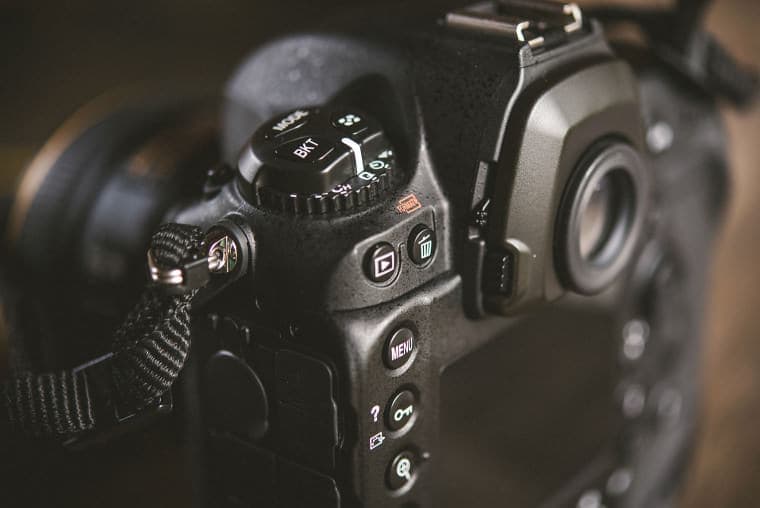
Nikon D5 | © Sam Hurd
The internal menu system of this full-frame camera is very intuitive and easy to navigate on the large rear touch screen. There are also two additional sub-monitors for displaying critical shooting information.
When it comes to wildlife photography, the Nikon D5 has an incredible autofocus system where both subject tracking and low light performance are amazing. Its ability to track fast and erratic animals and birds are simply stunning.
Image quality on the D5 is incredible thanks to its combination of full-frame sensor quality and processing power.
When it comes to burst shooting to capture many images of your wild subject, the Nikon can accommodate up to 12fps shooting in RAW.
Beyond that, the camera has an amazing buffer capacity in being able to store up to 200 images. This is before writing them to either a pair of XQDs or a pair of Compact Flash memory cards. These are the fastest read and write memory cards and allow for large bursts to be quickly stored.
Imagine having hundreds of photos of a sprinting Cheetah and being able to pick out the moment it snared its meal. The Nikon D5 makes that possible.
As for battery life, regardless of using the mechanical or electronic shutter, you can shoot all day on a single charge.
The rear of the Nikon D5 features a big touchscreen with an amazing resolution for managing menus and looking through your images.
If working in low light conditions, the Nikon has a native ISO range of 102400 and a staggering expanded range of 3276800! Even with a telephoto lens that doesn’t have a wide aperture, you’ll turn night into day.
Nikon has been in the photography game for decades and in that time they’ve built up a capacity to produce exceptional Nikon lenses. If you’re looking for the perfect lens for your wildlife photography, then you cannot go wrong with the Nikon telephoto zooms and primes.
What’s more, many third party lens manufacturers produce incredible lenses to pair with the Nikon system.
If you’re in the market and looking for the best wildlife photography camera, especially a pro-level DLSR, then the Nikon D5 will not disappoint. Being a powerhouse of a camera, however, it is one of the heavier and more expensive options in this guide.
That said, you can rest assured that this is a purpose-built camera with incredible performance and an obvious capacity in the wildlife photography genre.
Yes, there’s the D6 now available with slightly better spec all round, but is it worth the extra dollars? We don’t think so. The D5 is good enough!
4. Sony a77II
Sensor: Crop Sensor | Resolution: 24.3MP | Monitor: 3-inch tilt-angle touchscreen, 2,359K dots | Autofocus: 79-AF points | Max frame rate: 12fps | Video: 1080HD at 60p | Weight: 1351g (2.97 lb)
This just might be the best Sony camera for wildlife photography.
The Sony a77II is a DSLR camera with exceptional performance that can proudly stand next to bigger and far more expensive cameras. It’s one of the best wildlife photography cameras available despite its crop sensor.
The APS-C sensor camera has a typical DSLR body shape – unlike many of the mirrorless Sony bodies on the market. It’s ergonomically designed for comfort thanks to a deep handgrip and sensible control placement.
The Sony is quite heavy and large compared to some of its siblings in the Sony mirrorless arena. However, it’s not an uncomfortable camera to use, and will still slide into one of the larger pockets on a vest for photographers.
It’s nice to know that there’s a comprehensive range of Sony telephoto zoom and prime lenses that are perfect for wildlife photography. They are sharp, fast and have wide apertures for subject separation.
Further to this, there’s a range of third-party lens manufacturers developing lenses for this system meaning you have suitable options to suit your budget.
The Optical Viewfinder (or OVF) on the a77II Sony wildlife camera has a great level of magnification making it far easier to spot and compose your wild subject in the field.
The rear tilt LCD has an incredible level of resolution making it far easier to view menus and check your images.
The output of the Sony a77II is incredible, with edge-to-edge sharpness and a great level of detail.
If you’re a wildlife photographer looking for a camera that can deliver excellent quality of images, then this is for you.
To capture such sharp images, you also need fast autofocus in order to track a fast or erratic subject. Thankfully, Sony is an industry leader in autofocus system performance across its mirrorless cameras and the a77II is no exception.
It has a lightning-quick focusing system that relies on 79-point focusing and an impressive tracking mode. Its sticky AF system means that your subject will be held in focus even if they are in flight or flat-out across the forest.
In terms of value for money, the Sony a77II is incredibly well priced – especially given its high level of performance and, most importantly, impressive image quality. There’s also a ton of great accessories available for it.
For those looking to step up their wildlife photography game, or even for newcomers looking for a DSLR, the Sony a77II is the best camera for wildlife photography in its class.
5. Panasonic Lumix DMC-FZ1000
Sensor: Mirrorless | Resolution: 20.1MP | Viewfinder: 2.360K dots | Monitor: 3-inch tilt-angle touchscreen, 921K dots | Max frame rate: 10fps | Video: 4K at 25p | Weight: 831g (1.82 lb)
Wildlife photography is one of those genres that is open to everyone regardless of their skill level. The Panasonic Lumix DMC-FZ100 is the ideal camera for someone that’s wanting to get into wildlife photography and build upon their skills and experience.
The FZ1000 is a smaller mirrorless camera system. The camera has a fixed lens meaning that this is the only purchase you have to make to get going. The kit allows for simplicity and ease of use while still delivering excellent image quality – ideal for a beginner wildlife photographer.
It’s both a compact and lightweight kit and is well balanced with the 9.1-146mm zoom lens made by Leica – a brand world-renowned for premium cameras and lenses.
Another brilliant feature of the FZ1000 is that it includes IBIS or In Body Image Stabilization, which is perfect for wildlife photography. The image stabilization reduces camera shake, especially when shooting at much slower shutter speeds to accommodate for low light.
The camera is a popular choice for those looking for a fast autofocus system that can obtain sharp details and, what’s more, track moving subjects.
Being a mirrorless camera, the Lumix features an Electronic Viewfinder, or EVF, with a great level of magnification and resolution for life-like views.
The rear touch screen also features a good level of resolution plus it’s able to tilt for flexible shooting angles.
A critical element when selecting a camera suitable for wildlife photography is how it can handle weather conditions. While not weather-sealed, the FZ1000 has a brilliant operating range from freezing up to 104° F (40° C).
Another great benefit for beginners in the field is that the menu system on this camera is very simple and easy to navigate through the various core functions and sub-functions. The last thing you want when you pick up a camera like this is to lose time with confusing menu systems while out in nature.
The Lumix FZ1000 is the perfect entry-level camera for wildlife photography and is great for beginners or students of the genre. As such it is incredibly well priced for a camera that includes a built-in telephoto zoom lens of impressive quality. It’s also the first sub-$1000 camera to offer 4k video recording.
This combination of value, performance and practicality makes the FZ1000 an incredibly tempting option when you’re on the hunt for the best camera for wildlife photography.
6. Sony a7III
Sensor: Full Frame | Resolution: 24.2MP | Viewfinder: 2.359K dots | Monitor: 3-inch tilt-angle touchscreen, 921,6K dots | Autofocus: 693-AF points | Max frame rate: 10fps | Video: 4K at 30p | Weight: 650g (1.43 lb)
Sony is a household name for high precision consumer electronics and their mirrorless cameras have been industry changing as far as advancement is concerned. The Sony a7III is a perfect example of this heritage as it’s expertly developed for wildlife photography at any level.
The a7 series of cameras from Sony have been widely acclaimed for their overall performance, but most importantly for their autofocus performance. The Sony AF system is industry-leading to say the least. This is especially the case with this camera as it features a fast Hybrid AF system that utilises both phase-detection AF and contrast-detection AF system.
In the field, the Sony a7III will deliver class-leading autofocus and tracking of your subject to ensure that your winning shot is never out of focus. A reliable Sony camera for wildlife photography indeed.
Compared to most of the full-frame DSLR cameras in this guide, the Sony is quite light and compact. Further to this, its simplistic design ensures that user ergonomics are key features – an important element in wildlife cameras.
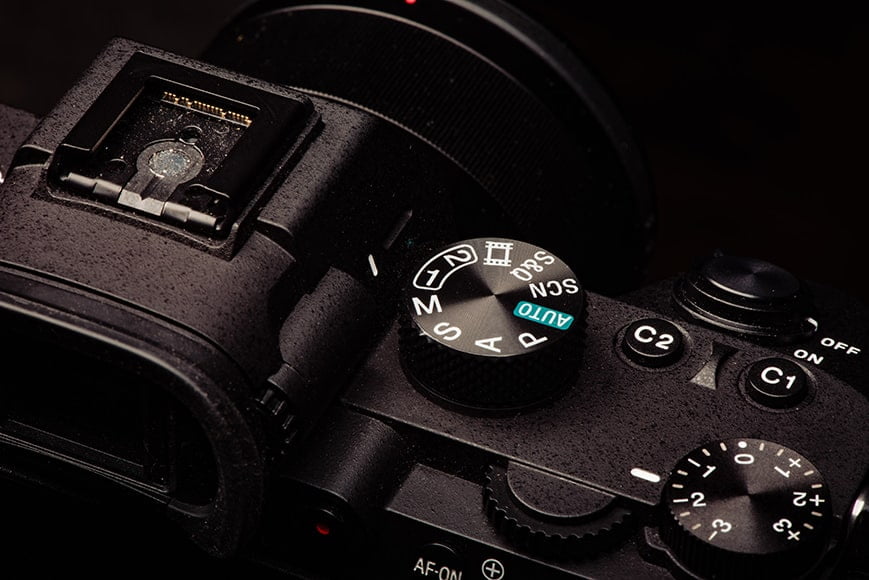
Sony a7III | © Jason Vinson
The handgrip is deep and comfortable and when holding this camera you have an adequate reach to important buttons and dials. There is a great level of customisation available with the inclusion of several custom buttons on the body.
The downside is that the Sony menus are often confusing to navigate and even more so to set customer functions. Thankfully, once you do have your camera set up to your liking, the need to dive deep into menus is reduced.
The Sony a7III has an amazing selection of Sony lenses built specifically for wildlife photography. Both telephoto zooms and prime lenses are available from the brand along with a huge range from third-party manufacturers.
Having access to such high quality and fast telephoto lenses, combined with the a7III’s performance, you’re sure to capture high quality and incredibly detailed wildlife images.
Thanks to a combination of the full-frame sensor and processor, the Sony a7III boasts the ability to capture up to 40 uncompressed RAW files, 89 compressed RAW files and up to 177 JPEGs in a single burst. This means that its processor and buffer are able to compute and store the image data quickly before writing it to the memory card.
Not to forget the ability to use the electronic shutter for silent shooting mode so as not to spook wildlife.
This kind of shooting speed performance is exactly what’s required for effective wildlife photographers to be able to capture high-speed bursts and in return have countless images to use.
If you hope to photograph wildlife in low light situations with this Sony camera, it optimises the full-frame sensor size and wide ISO range to mitigate image noise.
While the single in-body battery delivers a high shot count, you can add the optional battery grip for vertical shooting and double battery life.
What’s more, the Sony a7III is exceptional value for money and is perfect for wildlife photographers at any level. When paired with one of the countless high-quality lenses available, this camera will deliver exceptional image quality with your most memorable wildlife adventures.
Is it the absolute best camera for wildlife photography? No, but it certainly gives you the best bang for the buck, and paired with a good telephoto lens, you’ll go shoulder to shoulder with the top wildlife photographers out there.
Final Words
Ultimately, the best camera for wildlife photography is the one that suits your specific needs. Amateur wildlife photographers may want something small and light so they can discreetly and comfortably go for long forest hikes. , or perhaps a pro-grade DSLR with all the bells and whistles is more your style.
Of course, your budget will factor into the wildlife camera you choose. This will directly impact your choice over a full-frame camera, crop sensor, image sensor and also the focal length of your telephoto lenses.
One thing we can confidently say is that this roundup of the best cameras for wildlife photography includes plenty of gems – and whichever one you choose is going to help you catch stunning images of even the most fleeting subjects.
(…and if you’re looking for a more ‘stealthy’ approach to capturing animals in the wild, check out our guide to the best trail camera.)

Lock onto even the fastest creatures with intelligent subject tracking and incredible AF performance.





